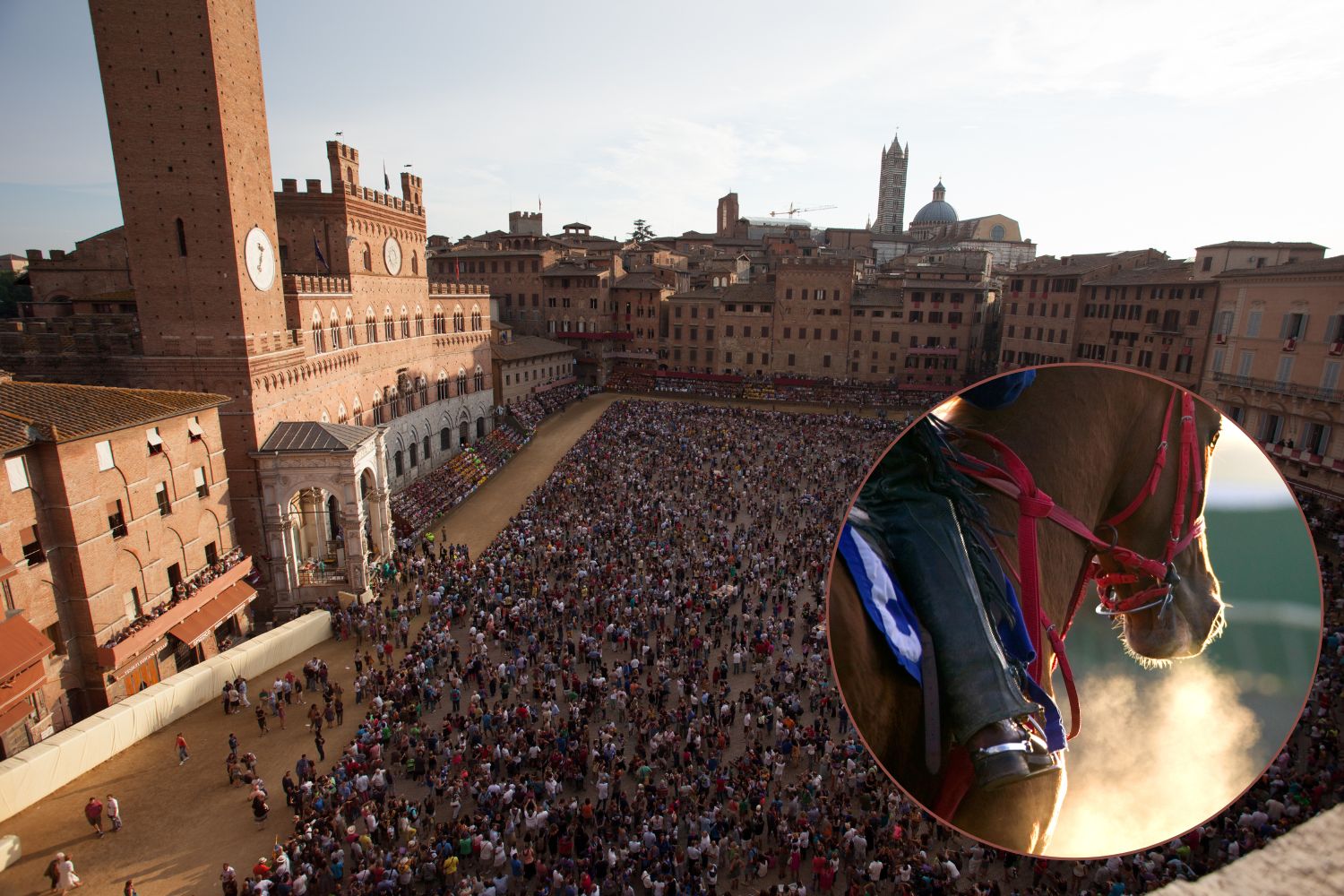The Palio di Siena returns, sparking outrage for its deadly toll on horses. Animal groups call for a cultural shift—but Siena won't let go of its blood-soaked tradition.

@Canva
Every summer, beneath the blazing Tuscan sun—which easily climbs above 91°F (33°C)—Siena prepares for its most iconic and controversial event: the Palio. It’s colorful, chaotic, centuries-old… and deadly.
The historic Piazza del Campo is dressed to impress. Trumpets blare, flags wave, and thousands of spectators squeeze into every available corner of the square to witness the race. But behind the folklore and festivity lies a darker, blood-soaked truth—this isn’t just a race. It’s a ritual of domination where horses pay the ultimate price.
The race they call tradition
The Palio features ten horses, assigned by lottery to competing city wards known as contrade. The animals are forced to sprint at full speed around a tight, sloped, and uneven track, where danger lurks around every bend. One turn in particular—San Martino—has gained notoriety for its brutal crashes.
The noise is deafening. Riders wield whips not just against opponents, but against the horses themselves. The animals, terrified and overstimulated, must somehow navigate this madness. It’s not rare to see them fall. Or worse.
While many celebrate the spectacle as a proud tradition, others watch in horror. Since 1975, around 50 horses have died due to the Palio. Some collapsed on the track. Others were so badly injured they were euthanized shortly after. Some simply disappeared once the crowd went home.
There was Zodiach, who died in 2004 after being forced to compete ten times. Amaris and Ombrone, both euthanized in 2006 and 2011 respectively due to severe injuries. And Raol, who met his fate in the July 2, 2018 edition.
Others like Zio Frac are still alive—but bear the visible scars of beatings and trauma.
A death toll no one wants to stop
The numbers are staggering. And yet, not enough to stop the show. Even the definitive conviction of a jockey for animal abuse wasn’t enough to trigger reform. Every year, the race continues—despite fatal accidents, public protests, and outcry from animal rights organizations.
Efforts to modernize or even suspend the event have been met with fierce resistance. Defenders of the Palio argue it’s part of Italian heritage. But at what cost?
Italy’s leading animal rights group, LAV (Lega Anti Vivisezione), has issued a formal appeal to Parliament and major cultural institutions. The message is crystal clear: events like the Palio, jousts and historical parades must evolve—without animals.
The point isn’t whether this year’s race had an accident or not. It’s not about safety nets or sandbags or veterinary checks. It’s about the concept itself—the use of living beings as entertainment props, as if centuries of moral progress never happened.
There’s another way
The good news? It can be done differently. The town of Montepulciano scrapped horses from its own traditional Bravìo event, replacing them with barrel races and reinventing local folklore without bloodshed.
Siena, proud as it may be, could follow that path.
We’re living in the 21st century. Culture should celebrate life—not sacrifice it. A tradition that clings to death will, sooner or later, become its own funeral march.
